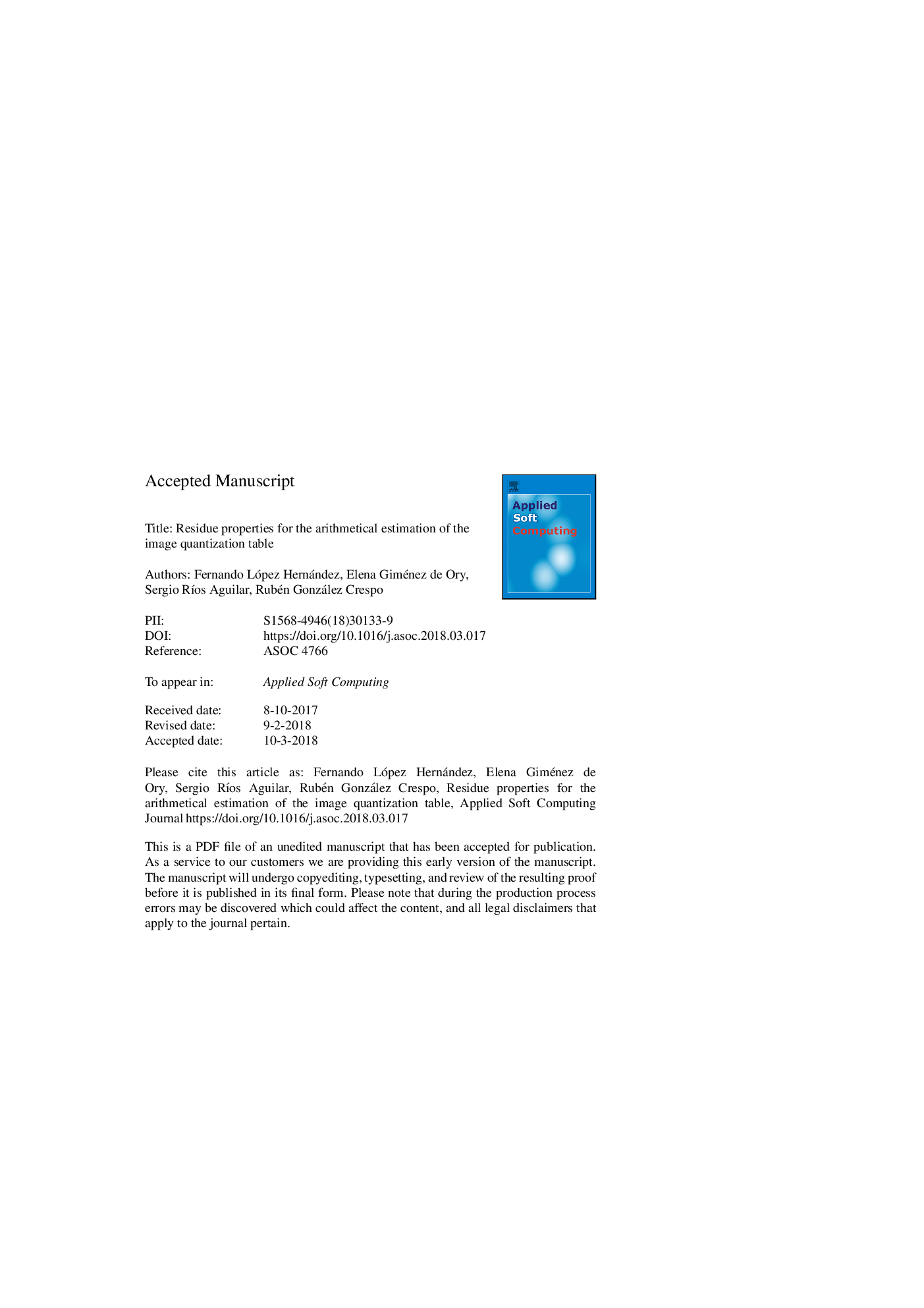| Article ID | Journal | Published Year | Pages | File Type |
|---|---|---|---|---|
| 6903791 | Applied Soft Computing | 2018 | 47 Pages |
Abstract
Traditionally, a statistical approach has been used to detect the JPEG quantization table used to compress a bitmap. This approach has the disadvantage that at times false solutions are found. These false solutions may have important implications if, for example, a court expert issues an incorrect assessment on whether an image is forged. This paper develops the concept of residue properties, which enables us to determine the quantization table following an arithmetic approach. This study shows that these properties allow us to ensure that no false solutions are produced, but at the cost of being able to obtain more than one compatible solution. Sometimes we prefer to find this set of possible Q values (quantization values) used, without risking obtaining a false solution. If we choose to obtain a unique answer for Q, then we can perform a statistical analysis on this pruned space of compatible solutions to decide the most probable Q value. In this way, a higher success rate is obtained than if we perform only a statistical soft computing analysis on the total space of solutions.
Keywords
Related Topics
Physical Sciences and Engineering
Computer Science
Computer Science Applications
Authors
Fernando López Hernández, Elena Giménez de Ory, Sergio RÃos Aguilar, Rubén González Crespo,
